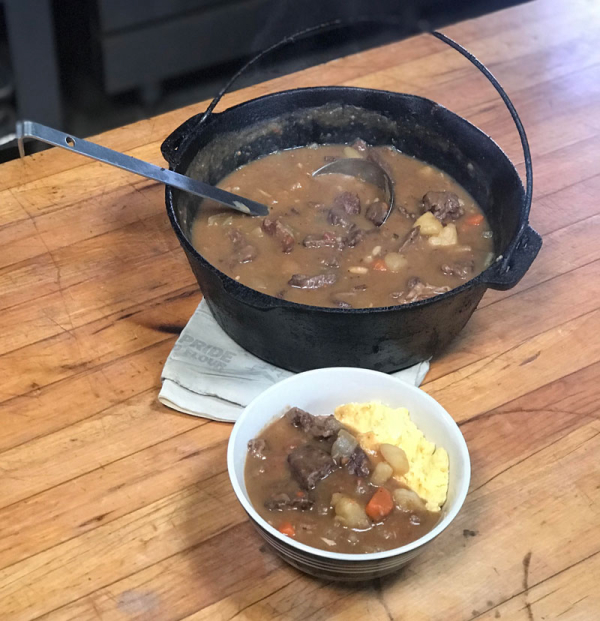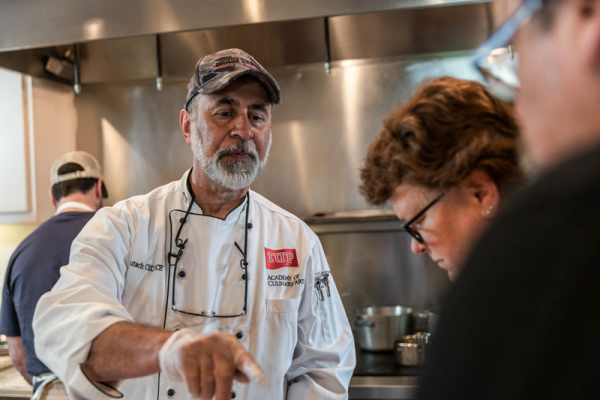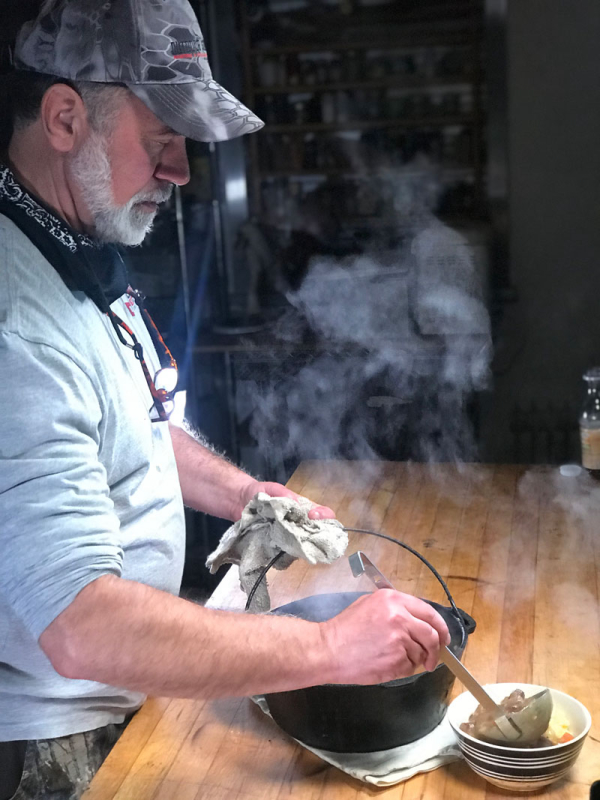Part III – What’s For Dinner?

In the first two segments of pro chef Albert Wutsch’s breakdown of getting your meat safely back to your kitchen and correctly breaking it down into usable cuts, it’s now time to get out pans, spices, and utensils. Wild game can be delicious using proper cooking techniques for each particular cut to produce the best and most tasty meal. Wutsch serves as the guest chef and consultant at Outdoor Solutions’ Field-to-Table culinary events. Chef Wutsch is also a culinary educator and regularly writes for publications and has published several books.
What’s for Dinner?
Now that you’ve taken all the necessary steps processing your game meat from the field to the freezer and you have quality meat at the cutting board, it’s time to decide what’s for dinner. Do you want to slow cook comfort food with family and friends, or would you prefer cooking something fast and fancy out of a sauté pan?

Cooking hot and fast is the best way to get the most out of tender cuts of game.
|
Either way, cooking requires organization, planning, preparation, and good time management. When planning dinner, cooking is not always “off the cuff” using whatever is in the fridge and pantry. How much time do you want to spend preparing dinner? Do you have all the ingredients? For whom are you cooking dinner? These are just a few of the many questions that will determine what you prepare.
Let’s say you feel like slow cooking a large elk roast. You are starting three to four days in advance. A tough cut of elk is pulled from the freezer and thawed for three days in your refrigerator. You determine how many people you are preparing for and acquire all the necessary ingredients. Determine when you want the finished preparation and work backward to determine when to start the cooking process, curing, smoking, etc.
Each cooking method has specific vital steps necessary to make your meat tasty and tender. The final stage of cooking is as important as all previous methods and techniques combined. You could have shot a young animal, appropriately aged, fabricated and appropriately stored, and then mess it up and defeat all previous precautions if you put the meat in a cold pan or leave it in the sauce as it boils and reduces when sautéing.
There are general guidelines when cooking tender and tough cuts. Generally speaking, tender cuts of all animals are cooked with dry cooking methods – high heat, fast, and always served rare. Exceptions are poultry, wild boar, and bear, which should be cooked thoroughly and well done. Tough cuts from any animal are, generally speaking, always cooked low and slow for long periods to make tender. They are always cooked to well done and fork-tender.
Matching the correct cooking method to each muscle is the key to tender and tasty meals, which means your meat identification skills need to be honed and refined. Once you understand this concept, it is straightforward to substitute meats and muscles in various recipes. For example, substituting boar for deer or substituting the legs and thighs of goose and turkey for the shank of boar can be quickly done. Go to the meat counter and check out the names and cuts of meat, you’ll be pleasantly surprised when you see how similar beef is to your deer.

Outdoor Solutions chef and consultant Albert Wutsch instructs a student on proper cooking methods for wild game.
|
Dry heat cooking methods for tender cuts include stir fry, sauté, pan fry, deep fry, broil, grill, and roast. Apply combination cooking methods such as braising and stewing for tougher cuts. There are three moist cooking methods; boiling, steaming, and poaching. Boiling is best suited for less tender cuts. Barbecuing is a low and slow cooking method used for tough, fatty cuts of meat, while grilling is high heat and fast used for tender cuts. A good example of game meat to barbecue would be a fatty leg of a bear to cure, smoke, and grill. There are exceptions to all rules, such as the tender breast of pheasant can be poached, which is a moist cooking method. If you are going to slow cook, then remove a less tender cut of meat from the freezer. If you want to sauté or grill, then remove a tender cut of meat.
The concept of applying the correct cooking method to each muscle is essential to a quality outcome. Once you understand all the critical steps of each cooking method, your success rate of having tender, tasty, meals will improve dramatically.
When freezing muscles, I recommend freezing whole trimmed muscle. Leave the fascia (tacky membrane on the outside of muscle) on before freezing. The fascia on aged meat has dried up and will be removed anyway. The fascia comes off very easily when the meat still has frost in it and is a firm muscle. All fascia needs to be removed from all tender cuts for dry cooking methods. This fascia is what makes the meat contort out of shape when cooking and will result in a chewy finished product. Most importantly, it will impart an unwanted gamey taste. This is one reason why I don’t recommend getting your deer’s hind leg cut into round steaks.
Let’s use the Flat Iron muscle as an example, as it is the most tender cut on the front leg. It is located on the outside blade of the shoulder blade. Remove and trim, leave in a large piece, package for freezing, leaving the fascia on. Freeze in a large piece to lessen your butcher time, and it gives you options to prepare. If you fabricate this muscle into medallions and then freeze, you doubled your butcher time, increased surface area so you get a lot of blood loss when thawing, and you are limited to cooking medallions. Freeze the trimmed muscle in a large state, remove from freezer, remove fascia while the meat is still frosty. When you remove from the package labeled “Flat Iron,” you know that it is a tender cut. You know that you can apply multiple dry cooking methods to prepare it for a variety of recipes.
Most hunters love to cook and prepare the game they’ve harvested. Cooking the game we’ve brought home is rewarding and fulfilling. It completes the cycle knowing all the preparation and planning from the field to the table is shared, making more memories with family and friends.
Good Cooking, Chef Wutsch
